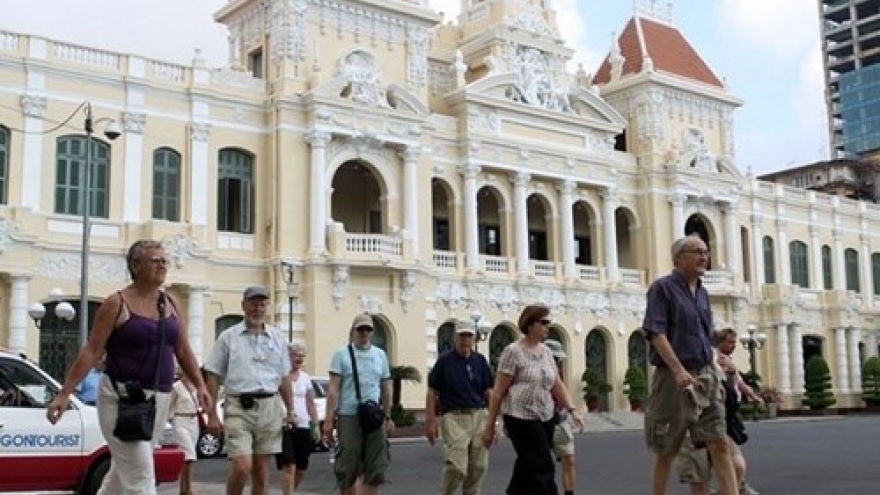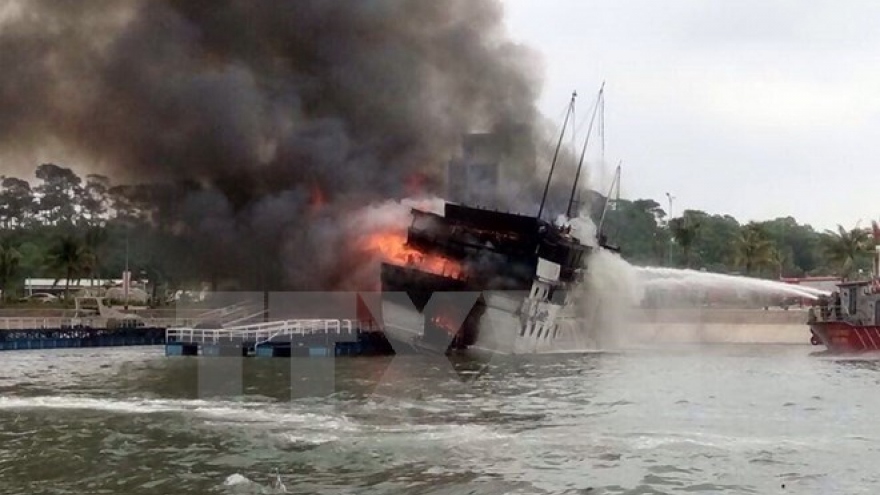Tourism authority looks to boost traveler protection
The Ho Chi Minh City Department of Tourism has proposed a plan to improve the efficiency of the tourist help force to ensure better safety in tourist sites in the city, especially in the downtown area.
The tourist help force, a unit of Voluntary Youth Public Service Co Ltd, was formed in 2006 to ensure security and safety for tourists in places of interest in districts 1 and 3, including the Notre Dame Cathedral, Post Office, War Remnants Museum, Ben Thanh Market, Reunification Palace, Pham Ngu Lao, Le Loi and Nguyen Hue streets, and Bach Dang Wharf.
The department said at a review meeting on June 13 that security for tourists remains a problem as visitors are still bothered by street vendors.
Coordination between relevant agencies and the tourist help force has not been as effective as expected.
 |
| Two tourist helpers in Ho Chi Minh City move around on roller skates in Nguyen Hue pedestrian square in the downtown area. The HCM City Department of Tourism has proposed a plan to improve the efficiency of the force to ensure better safety at tourist sites in the city |
Meanwhile, the city’s long-planned pilot project to establish a tourist police force has not been approved by the Government, so it is necessary to improve the performance of the tourist help force.
The department suggested the tourist help force be equipped with tools and allowed to employ more staff to meet demand.
Van Thi Bach Tuyet, director of the Ho Chi Minh City Department of Tourism, said as incomes of tourist helpers are low, they are not devoted to their job. There are no legal basis for the city to collect fees from travel firms to pay for the force.
In addition, penalties for robberies and violations of street vendors are not heavy enough to deter them. Some of they even react against tourist helpers.
Ho Chi Minh City Deputy Chairman Tran Vinh Tuyen said the number of attacks on tourists, especially foreigners, in the city have plummeted in recent years. However, he required better collaboration among relevant agencies in cracking down crimes in the tourism sector.
District authorities should coordinate with travel firms, particularly in the downtown area, to ensure safety for tourists. Tuyen also suggested the tourism department to work with State-run tour operators over a plan to voluntarily contribute funding to the tourist support force.
Earlier, La Quoc Khanh, deputy director of the department, said in 2015 agencies of Australia, the Republic of Korea (RoK) and Japan in Ho Chi Minh City sent diplomatic notes complaining that their citizens had lost their passports and belongings due to robberies in the city. Japan reported 83 cases, Australia 73, Taiwan 80 and RoK 10.
The agencies expressed concern that more foreigners had fallen victim to thefts and robberies in Ho Chi Minh City and a lack of support from relevant agencies to protect visitors.
International arrivals in Ho Chi Minh City account for 50% of the total number of visitors to Vietnam annually, and posted an average increase of 9% per year in the 2011-2015 period.
Tourism sector revenue contributed 9-11% to the city’s gross domestic product (GDP) and stood at VND94.6 trillion (US$4.23 billion) last year, up 10% over 2014.


